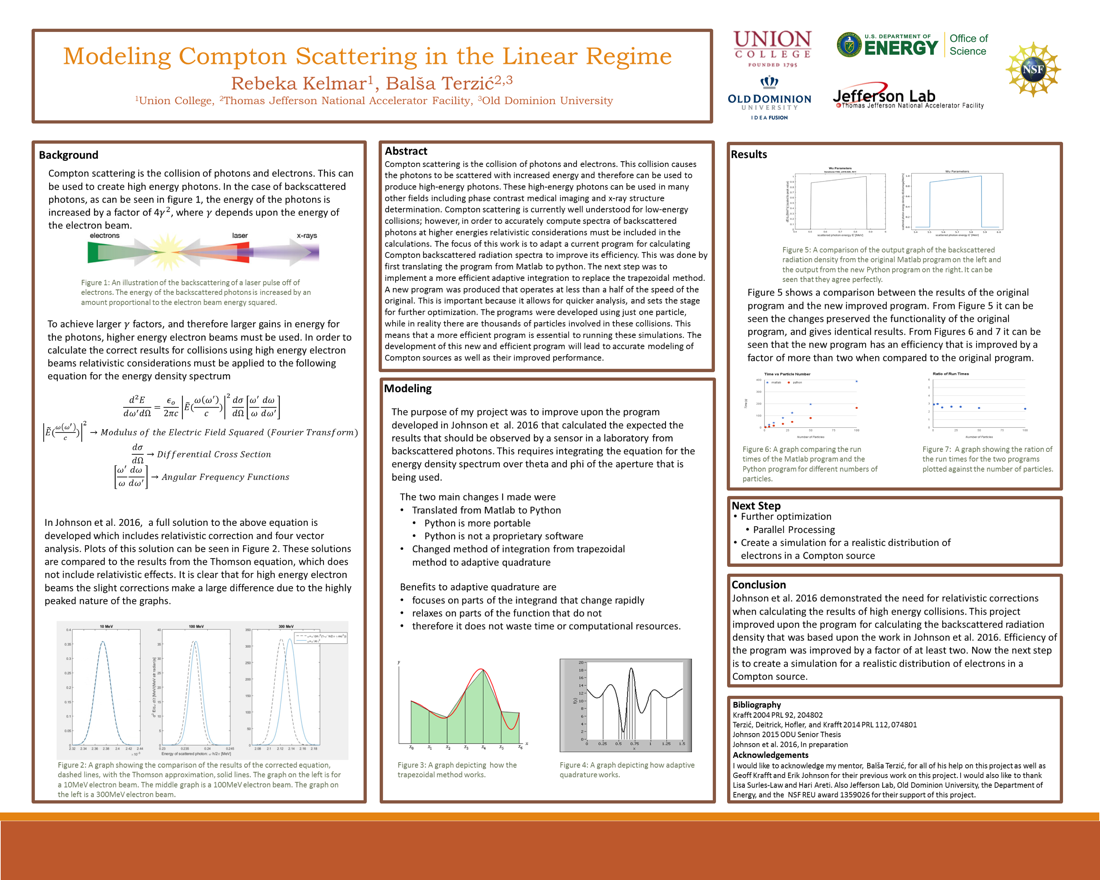Undergraduate Research at Jefferson Lab
Modeling Compton Scattering in the Linear Regime
Student: Rebeka Kelmar
School: Union College
Mentored By: Balša Terzić
Compton scattering is the collision of photons and electrons. This collision causes the photons to be scattered with increased energy and therefore can produce high-energy photons. These high-energy photons can be used in many other fields including phase contrast medical imaging and x-ray structure determination. Compton scattering is currently well understood for low-energy collisions; however, in order to accurately compute spectra of backscattered photons at higher energies relativistic considerations must be included in the calculations. The focus of this work is to adapt a current program for calculating Compton backscattered radiation spectra to improve its efficiency. This was done by first translating the program from Matlab to python. The next step was to implement a more efficient adaptive integration to replace the trapezoidal method. A new program was produced that operates at less than a half of the speed of the original. This is important because it allows for quicker analysis, and sets the stage for further optimization. The programs were developed using just one particle, while in reality there are thousands of particles involved in these collisions. This means that a more efficient program is essential to running these simulations. The development of this new and efficient program will lead to accurate modeling of Compton sources as well as their improved performance.

Citation and linking information
For questions about this page, please contact Education Web Administrator.
